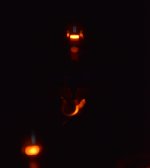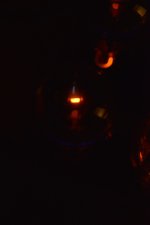Another type of glow you may see in power tubes appears on the inside surface of the plate structure. The pattern of the glow will aften appear in strips that vary along with the signal applied to the tube. (i.e., the music.) This type of glow is generally normal as well. It is often caused by a thin layer of atoms that have boiled off the cathode and deposited on the surface of the plate. What you see is the slight flourescence of this material when it is hit by electrons from the cathode. The stripes correspond with the alignment of the grid wires. The varying widths of the stripes demonstrate the operation of the tube. The grid allows restricts the size of the electron beam according to the grid's voltage.
The extra capacitance to ground is claimed to have been designed into the circuit, but I've never seen any actual evidence for that, or that it was even there when the original couplimg capacitors were new. The amplifier works perfectly well without it. The KT66s already have Cag of about 30pF, and that is the only pole required for stability.
The evidence is in an official Quad service sheet which mentions adding 33pF between each ef86 anode to ground. They also add a similar value cap on the current reissue Quad IIs, though fitted between pins on the KT66 bases to ground.
- Status
- This old topic is closed. If you want to reopen this topic, contact a moderator using the "Report Post" button.
- Home
- Amplifiers
- Tubes / Valves
- Quad II questions

